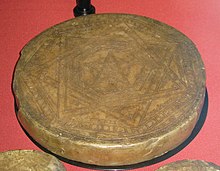Wax
Biological waxes are esters of long-chain fatty acids (C14-C36) with high molecular weight alcohols, i.e. long chain (C16 to C30 ). They are molecules that are obtained by esterification, a chemical reaction between a carboxylic acid and an alcohol. The most frequent fatty acids include: palmitic acid (C16), stearic acid (C18), lignoceric acid (C24) and melisic acid (C30). Among the most common alcohols, the following stand out: cetyl alcohol (C16), ceryl alcohol (C26) and myric alcohol (C30). Their melting points (60–100 °C) are generally higher than those of triacylglycerols. They are substances insoluble in water but soluble in nonpolar, organic solvents. All waxes are organic compounds, both synthetic and of natural origin. They do not become rancid, since they do not contain unsaturations susceptible to oxidation.
In animals, wax covers the surface of the body, skin, feathers, etc. In vegetables, the waxes cover the epidermis of fruits, stems, along with the cuticle or suberin, which prevents the loss of water by evaporation in plants. Another example is beeswax, made up of a long-chain alcohol such as myricyl alcohol (1-Triacontanol, C30H61OH) and palmitic acid (CH3(CH2) 14COOH). The organisms that form plankton are rich in waxes, for this reason, marine animals from cold regions, whose main food is plankton, accumulate waxes as their main energy reserve.
Getting
The process for obtaining the wax varies depending on the type of this product we are dealing with. For example, to obtain the wax present in the skin of certain mammals, see lanolin. As for beeswax, it is obtained from the wax combs that bees build inside their hives. One way to obtain it from the honeycombs is to place them inside a closed container and put water in the bottom that is heated until steam is formed, thus melting the wax that floats in the water and separating from the waste that remains below, the liquid wax is it is poured into containers to cool slowly, the wax having a low specific weight, it is separated from the foreign remains that remain adhered to the bottom of the wax block. Another way is through the solar cerifier that melts the wax by exposing it to sunlight and melting it falls into a container where a little water is placed to prevent it from sticking. The beeswax that covers the cells is called operculum wax and is the most appreciated, being very light in color, compared to that obtained from the melarial squares or breeding squares.
Uses
It has traditionally been used to make candles, for lighting, of high quality; to wax wood, paper, fabrics and leather, as a preservative and waterproofing, and therefore, from the construction of a match, to a cartridge or ammunition in the military industry. It is used as a dielectric material because it is an insulator.
In cosmetics, in the form of creams or ointments, due to the anti-inflammatory and healing properties of many of its components. Another cosmetic application is as a depilatory, since the hair adheres to it and is easier to remove.
In art it is the painting technique known as encaustic used since the Romans described by Pliny the Elder in the I. Possibly taken from Egypt where they used it to make masks, portraits or effigies of the pharaohs. In the industrial era it was used to make figures in the famous wax museums that exist in much of the world. There are many painters who used mixtures of wax and honey in their oil paintings, from antiquity to the modern age. Wax tablets were also used to write on or cover writing.[citation needed]
In medieval times, it was used to make paste for stamps. The use of these became so widespread that Felipe the Fair of France, in an ordinance against luxury, published in 1294, provided that "no bourgeois or squire or cleric not being a prelate" could use such seals. The more distinguished the custom of sealing was, the more appreciated the wax was and for this reason, it was given as a gift to kings. Stamps are a special industry of the middle centuries. But this was not the only application of the wax. The candles that have been used since ancient times also lend themselves to field art to beautify them in the Middle Ages with coats of arms. The religious use that royal people would give to such candles is understandable.
On the other hand, we have the wax ex-votos. In 1389, being very ill, Charles IV of France made a vow to offer his cousin Peter of Luxembourg who had died in the opinion of a saint, a wax statue of his size that Dyne Raponde executed. Also Felipe II of Burgundy, seeing his son bitten by a mad dog and without the doctor's remedies counteracting the evil, had the image of the child made in wax of the same weight as this one and sent it to the church where the relics of Saint Antonio in Vienna.
Another application was also given to colorful wax effigies in the past: displaying it dressed in the clothes of the person when he had died as if he were in a present body so that his servants would come to assist him as in life. Such a strange custom was practiced with kings, princes or great lords until well into the XVII century and the period in which these honors were used posthumous of the deceased. It also appears that wax figures were used in the Middle Ages and the 16th century for exorcisms.
Since the Renaissance, wax has been used for the artistic specialty of ceroplastics.
In the foundry it is used for the construction of molds and castings, both positively and negatively in a technique called microfusion.
Contenido relacionado
Dichanthelium
Human embryology
Goniothalamus





